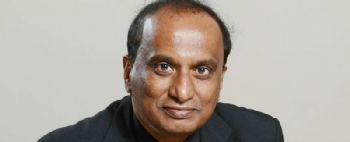
A pioneer in engineering new materials for use in health-care is to receive the £2,000 Armourers and Brasiers Prize
from the Royal Academy of Engineering (
www.raeng.org.uk) for improving patients’ quality of life.
Mohan Edirisinghe at University College London has spent 25 years developing new ways to make advanced materials, particularly for health-care applications.
As medical devices have become smaller, he has devised novel techniques for producing material at the micro- and nano-scale, with features such as bubbles and particles that are many-times smaller than the width of a human hair.
His patented technology for producing micro-bubbles and nano-particles has enabled whole new drug delivery systems — such as layered capsules — to be developed.
These systems can improve the way conditions such as urinary-tract infections are treated, saving money and alleviating the suffering of thousands of patients.
To manufacture such materials consistently, Professor Edirisinghe was the first to develop novel gyratory methods of manufacturing polymer nano-fibres, in which reactants are spun at high speeds under pressure.
Pressurised gyration has since been patented, and it is used by large chemical and pharmaceutical companies. Similar gyratory processes are being used to produce components such as anti-microbial filters.
He was also the first person to process very viscous materials by means of electrohydrodynamic (EHD) techniques, which involve using electrically charged fluids to print tiny structures an order of magnitude finer than those possible with ink-jet printing.
EHD printing is now used to produce porous structures for tissue engineering, plus bio-active ceramic-on-metal coatings for orthopaedic implants.
Professor Edirisinghe said: “I’m a maker and an innovator, and I want to help make things that previously couldn’t be made. In health-care, people want smaller and smaller features, so I want to invent new methods of production that will also scale up, making them attractive to industry.”